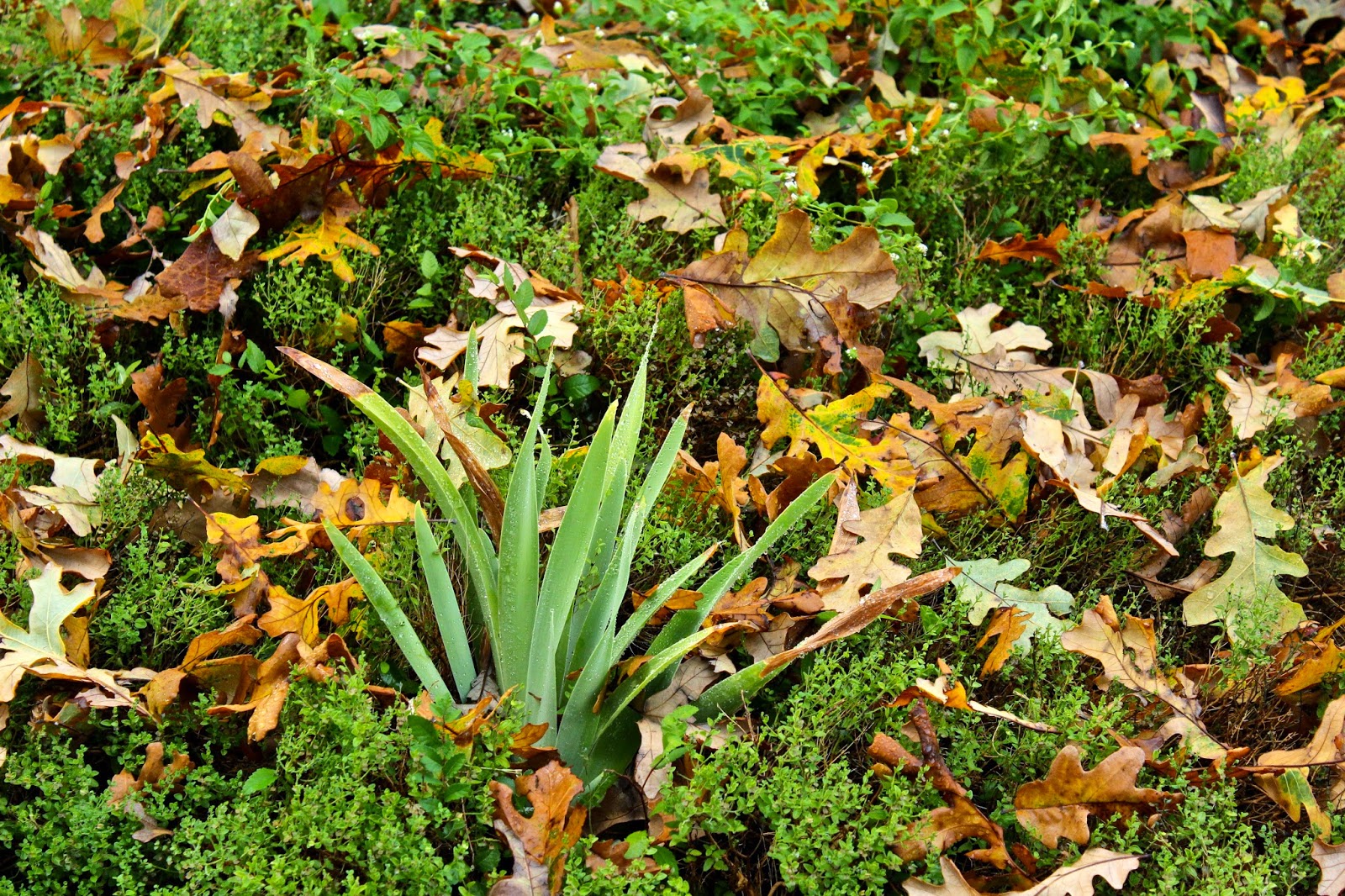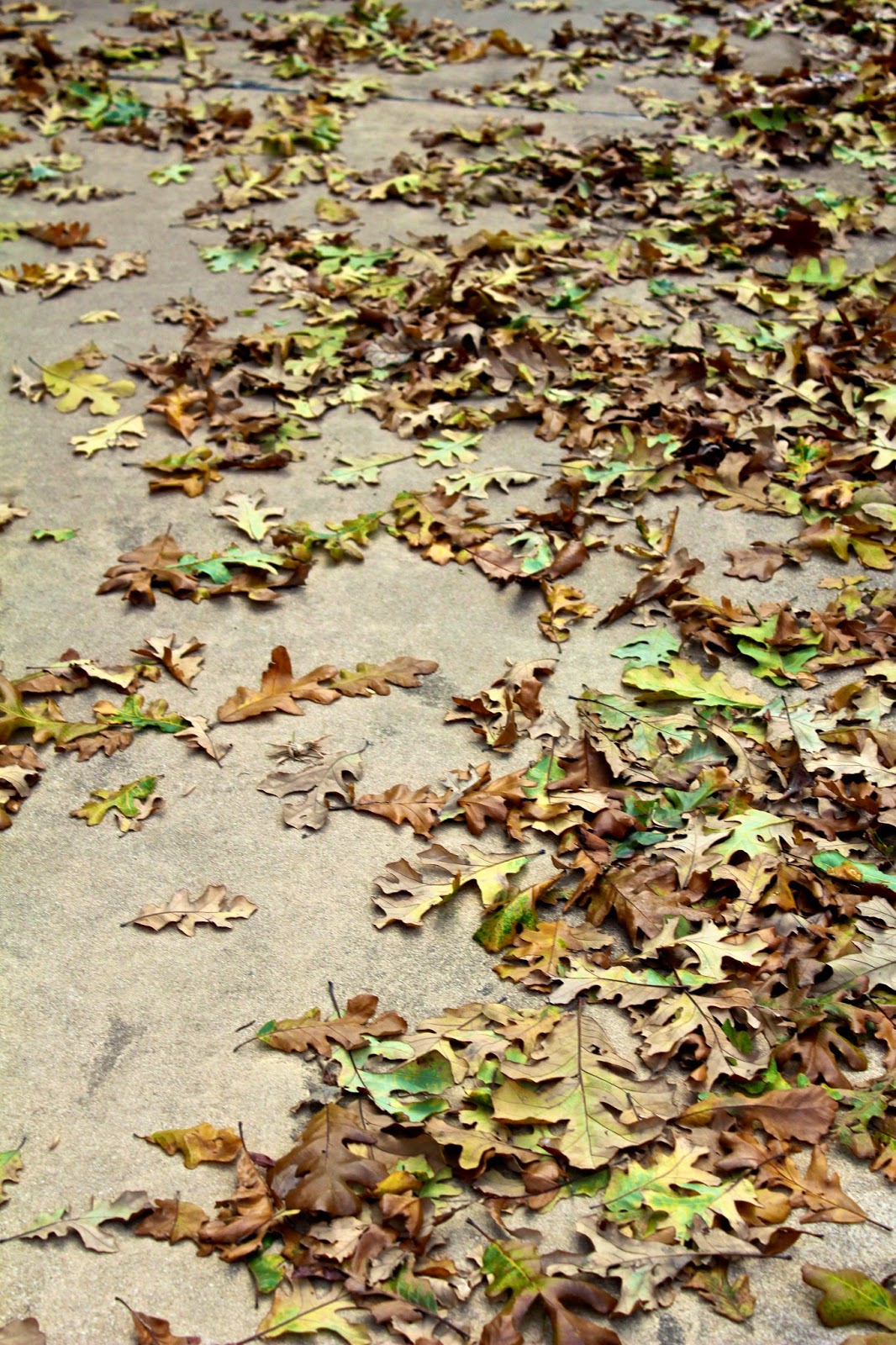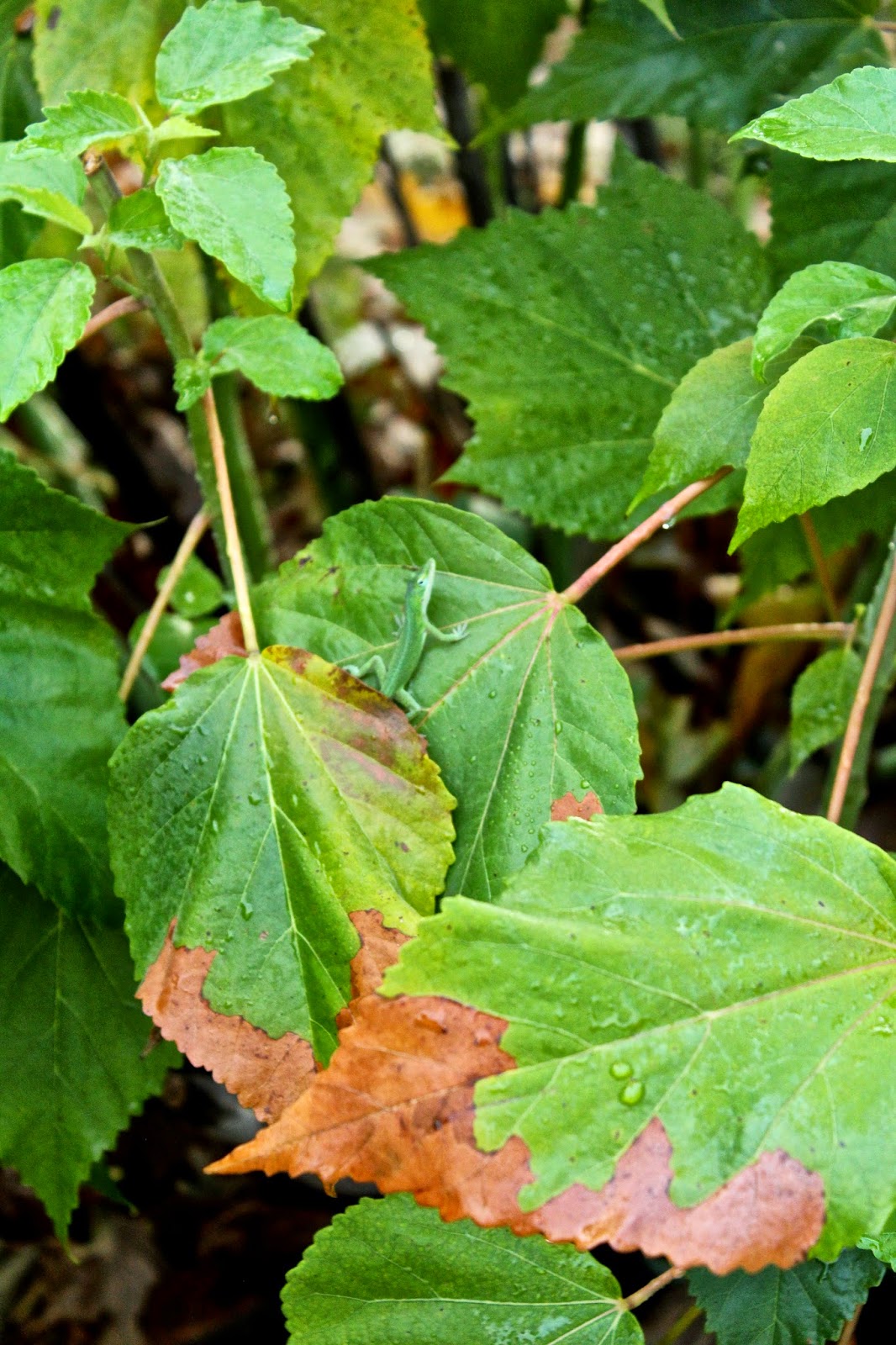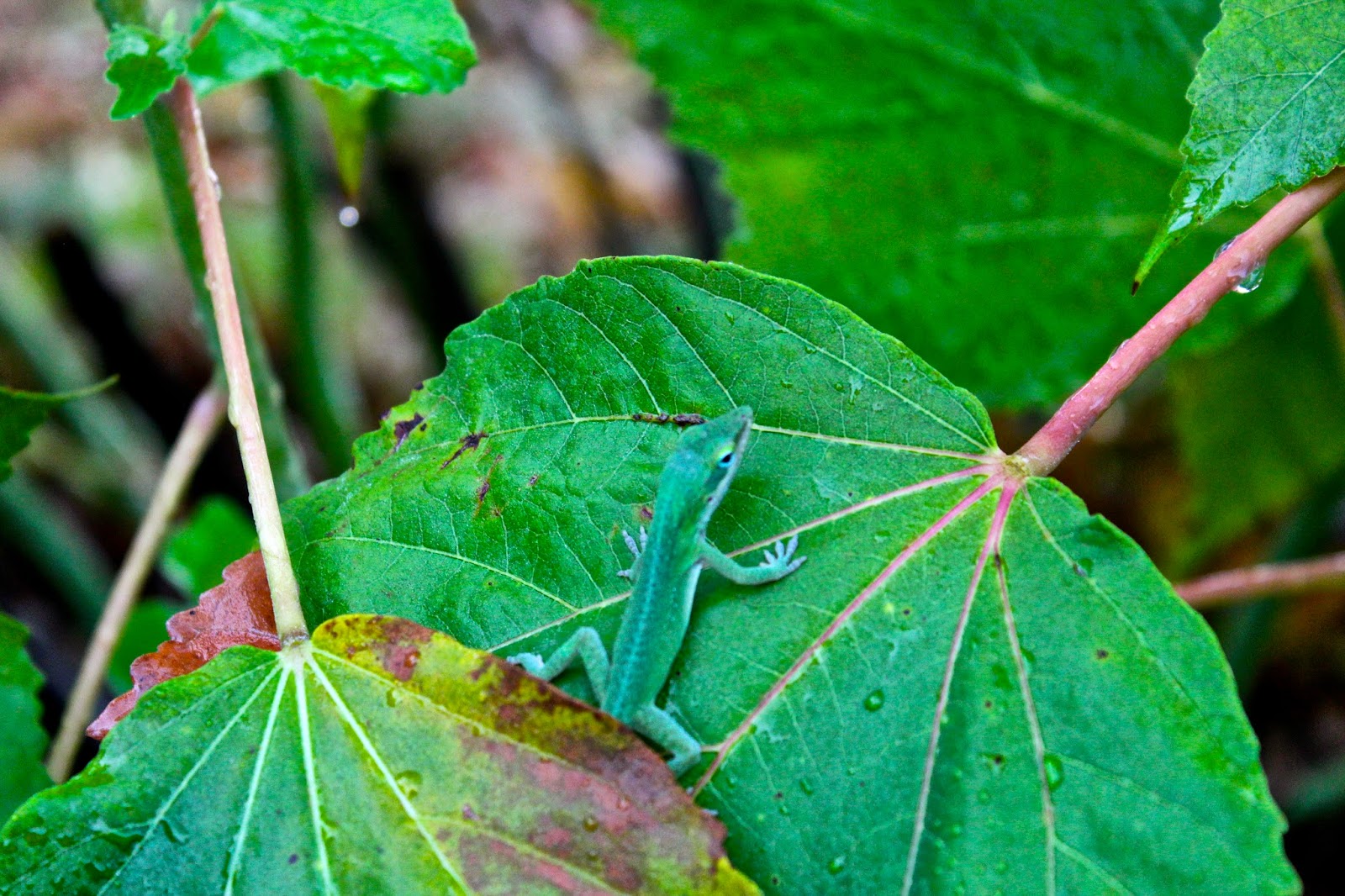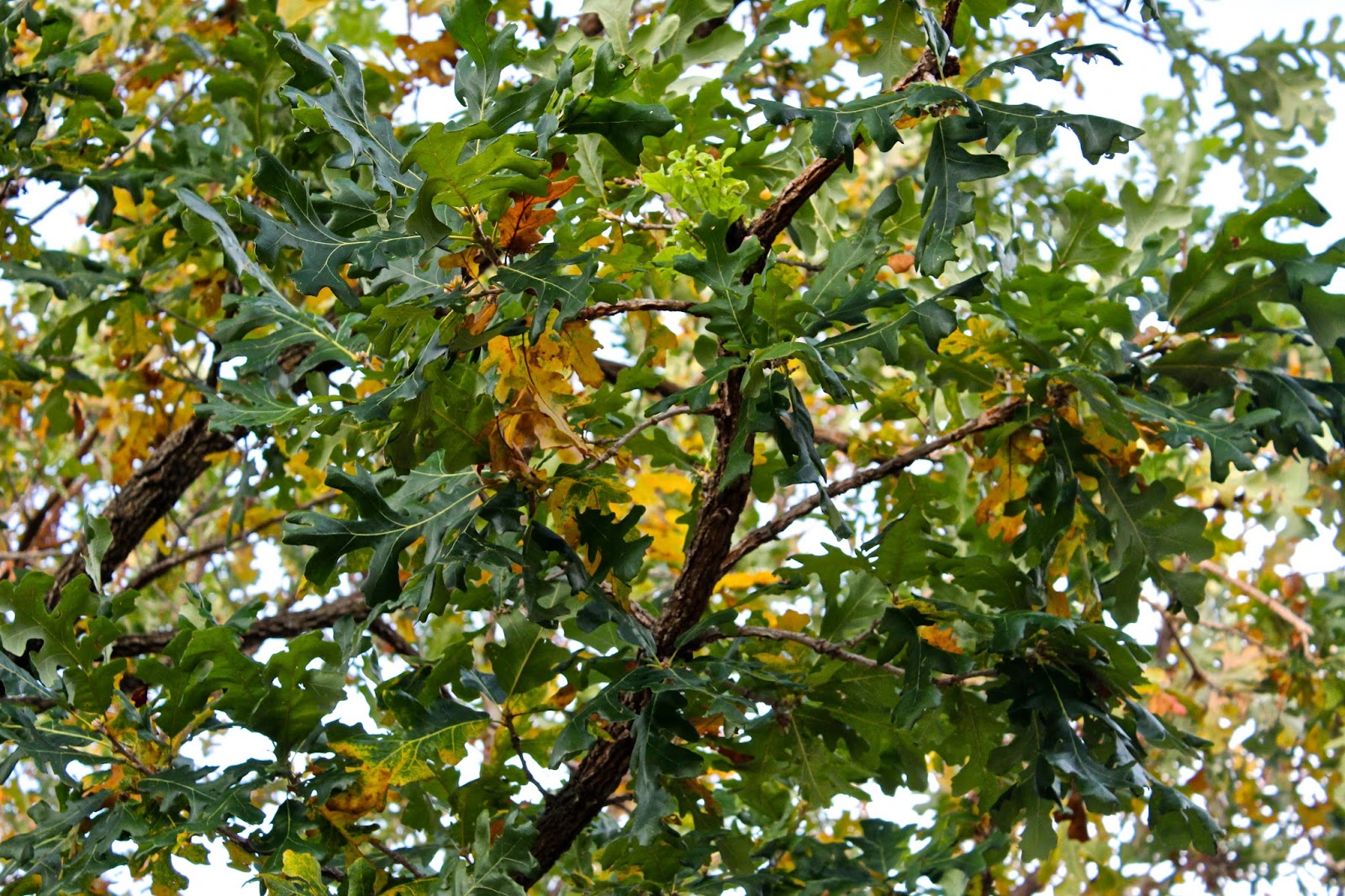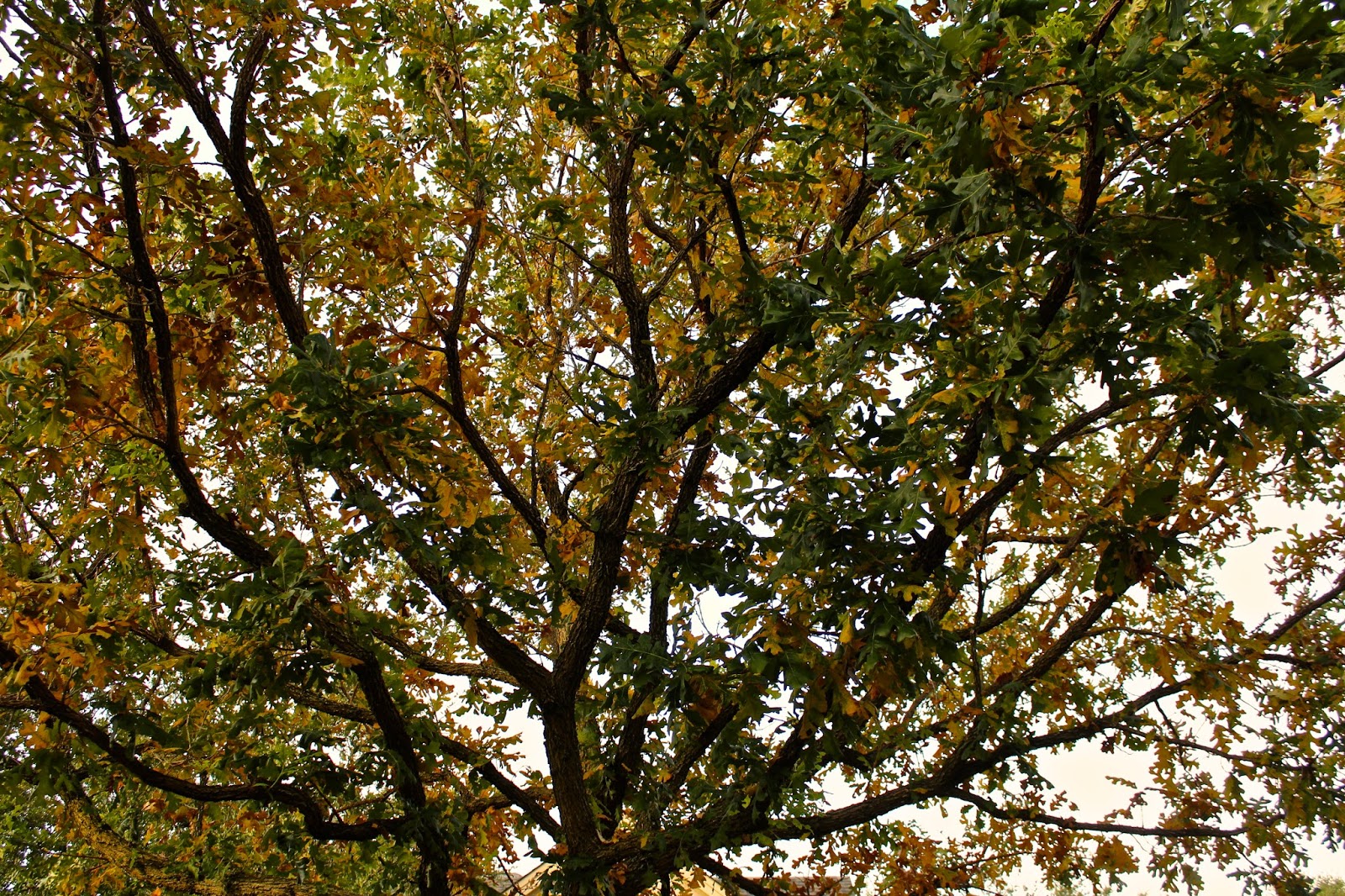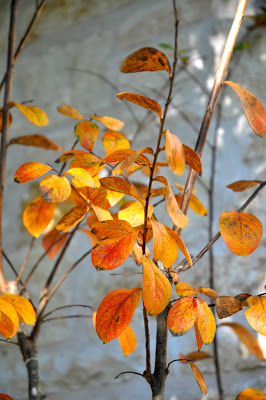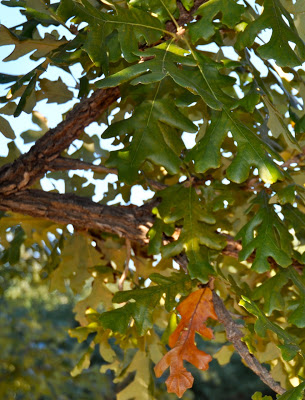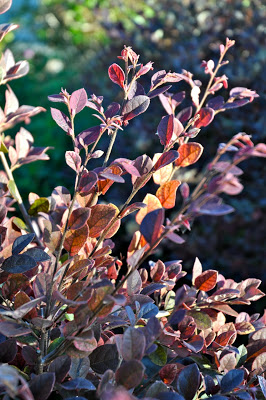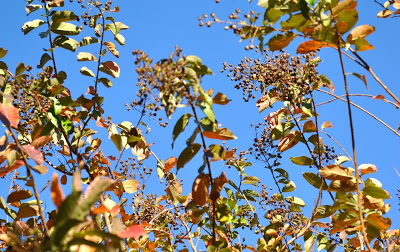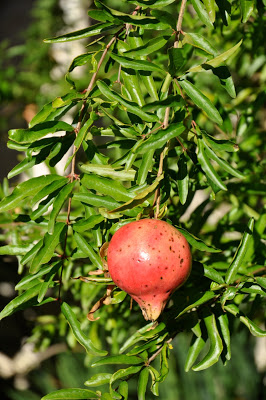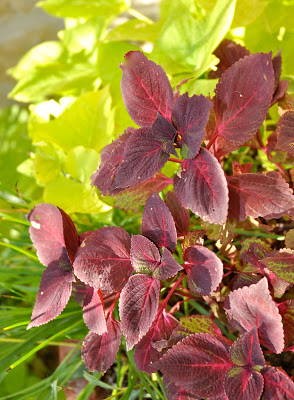Fall in the garden: In the air and on the ground…
I can’t honestly say that fall is in the air. With temperatures hovering around 100 for the last several weeks, the thought of fall remains a distant longing.
But it is coming.
Many of the summer-blooming plants are slowing down and taking it easy, done with the hard work of developing flowers. And waiting in the wings to take their place, the fall bloomers grow stronger with each day.
And the trees. Well, the one tree — the Burr oak. A majestic specimen, it decided last week that it was about time for the weather to turn and began dropping its leaves with abandon.
And they fell.
And fell…
And fell…
Then the Moy Grande Hibiscus next to the oak got the message, too. And it started to turn and drop its leaves.
Oh, look who was posing for me on this rain-drenched leaf. We were lucky to get a nice rain yesterday evening — I’m sure it made this guy happy to have a cool shower.
And so the leaves keep turning.
Fall will be here soon. A whole new season in the garden, with new sets of chores, challenges and opportunities.
I’m ready, are you?


